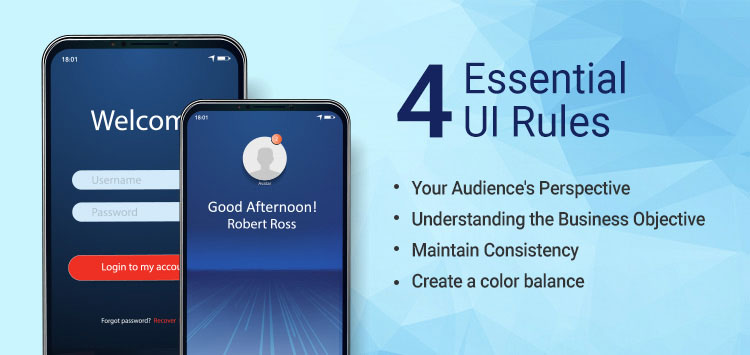4 Essential UI rules for effectiveness of Native App Development using Flutter

Designing an exceptional user interface is as important as embedding features within your Flutter app. It is noted that a majority of customer-facing apps fail because of an incompetent user interface. It could be messy or complicated and the user may find it hard to navigate across the application. Either be the case, having a user-friendly interface is of paramount importance. Most companies include it as one of the top essential factors in their mobile app development checklist.
In this article, you will find few tips that can help design a flawless user interface; while aiming for an intuitive & interactive Flutter Mobile apps.
Four Essential UI Rules: Making a Difference
-
Your Audience's Perspective
The first and the most important thing to keep in mind is the end-user perspective. Whether it is for the business professionals who are well versed in leveraging mobile apps or the app is meant for field-technicians, the information plays a vital role. Either be the audience, it is important to keep the user interface simple and intuitive, making it easier for them to navigate, execute their tasks, and access the important data whenever needed.
-
Understanding the Business Objective
An effective UI is one that not only catches the attention of the user but is also capable of vouching for the services offered by the business. Understanding what your client wants and the nature of their business is important when designing the user interface of the application.
-
Maintain Consistency
When working on the prototypes or the wireframes, make sure the design is consistent throughout the application. Use a single standard font, keep the size the same across all headers and descriptions.
-
Create a color balance
True that everyone wants to have an attractive application, but the choice needs to be made wisely and largely it depends on the type of business and the users as well. Not all industries seek bold colors for their app.
Conclusion
Building Native mobile apps are taking a toll with the rise in the frameworks that facilitate the same. While technically, each of the framework is different and has separate features, the UI of an app must be such that it not only grabs the user attention but also account for effectiveness and seamless app performance. Hence, the need to follow the above-mentioned rules for successfully building interactive Native Mobile Apps using Flutter.